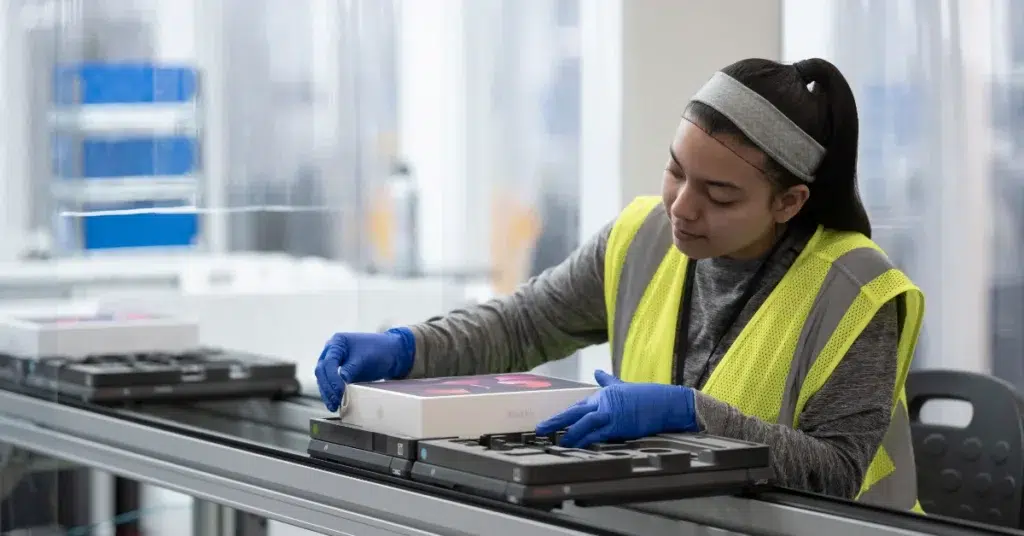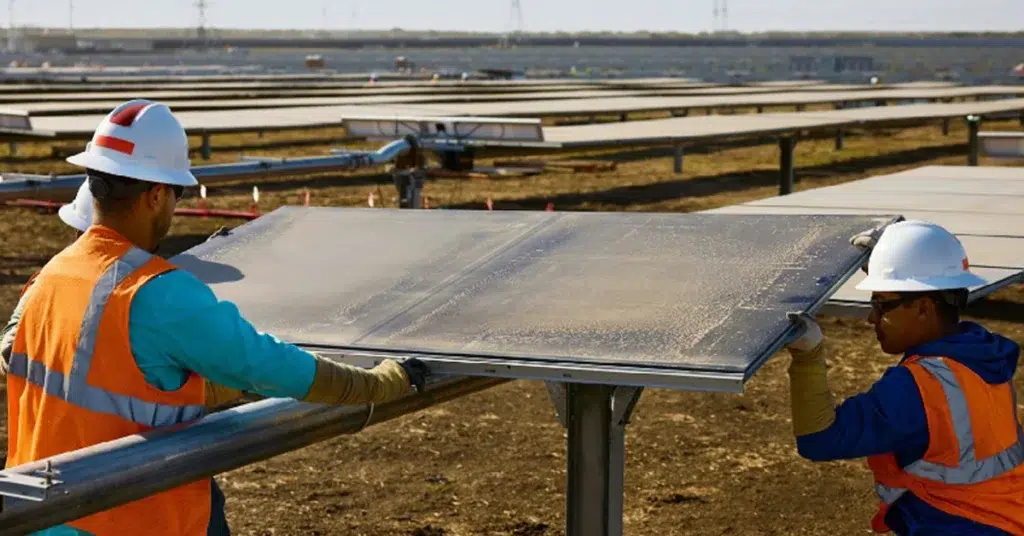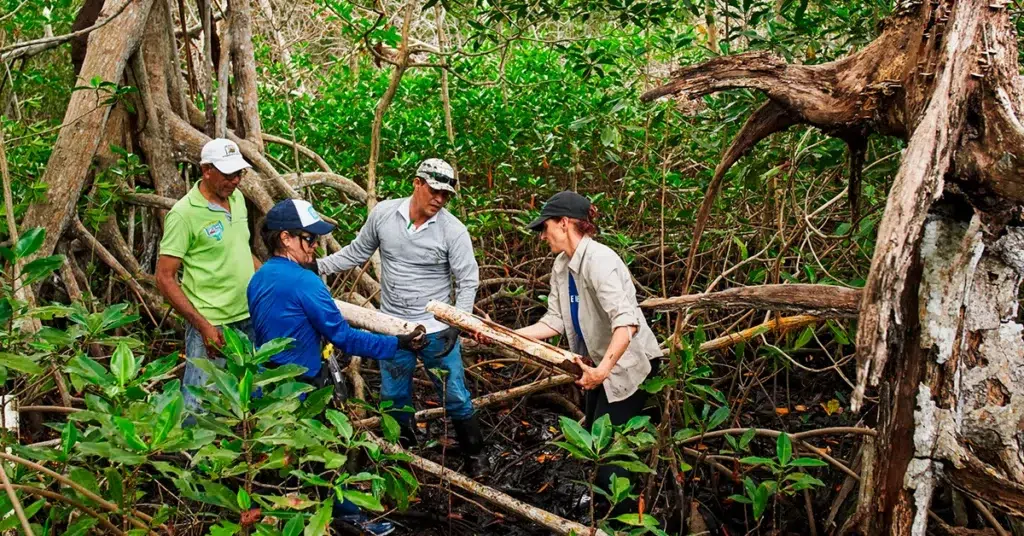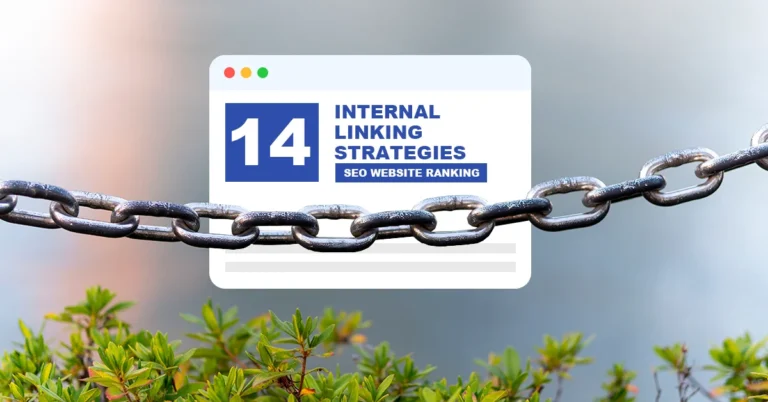
Apple's Green Mission
Apple has long been committed to environmental sustainability, and its drive towards carbon neutrality is a testament to this dedication. In 2020, the company achieved carbon neutrality for its worldwide corporate operations and unveiled the ambitious ‘Apple 2030’ strategy to achieve carbon neutrality across its entire value chain by 2030. Central to this plan is a drastic 75% reduction of its total carbon emissions from the levels recorded in 2015. Notably, Apple has already diminished emissions by over 45% since 2015, even with revenue growing by over 65% within the same timeframe.
The importance of environmental goals cannot be overstated, especially in today’s world where climate change poses significant challenges. Apple’s commitment to reducing its comprehensive carbon footprint by over 45% since 2015 while experiencing substantial revenue growth demonstrates the company’s recognition of the critical role it plays in addressing environmental concerns. Furthermore, Apple’s extensive environmental efforts have resulted in avoiding more than 28 million metric tons of carbon, showcasing the tangible impact of pursuing green initiatives.
Apple released its latest Apple Watch models with select combinations of cases and bands that are carbon neutral. This achievement was made possible through emission reduction from materials, electricity, and transportation, along with the collaboration of suppliers who use clean energy. Any remaining pollution was then offset through nature-based projects like restoring forests to capture more CO2.
As a result of these efforts, Apple has cut its overall emissions by over 45% since 2015, demonstrating a strong commitment to sustainability. The company continues to invest in innovative environmental approaches including low-carbon product design, new recycling technologies, and significant financial contributions towards green initiatives.

The Role of Suppliers in Apple's Environmental Goals
When it comes to Apple’s environmental goals, Suppliers play a pivotal role as key partners in the company’s sustainability endeavours. The supply chain’s environmental footprint is a critical aspect that Apple focuses on, recognizing the significant impact it has on its overall carbon emissions and ecological footprint.
Apple’s commitment to environmental sustainability extends beyond its own operations and products to include its vast network of suppliers. In an interview with Apple’s supply chain managers, it was revealed that rigorous independent third-party assessments are conducted to verify supplier standards. This demonstrates Apple’s dedication to ensuring that its suppliers adhere to stringent environmental guidelines and practices. Furthermore, Apple employees collaborate closely with suppliers on every aspect of their work, emphasising the importance of shared responsibility in achieving environmental objectives.
Expectations from Suppliers
Meeting Apple’s Green Standards is a fundamental expectation for all suppliers within the company’s supply chain. This entails not only complying with existing environmental regulations but also actively engaging in sustainable practices that align with Apple’s ambitious carbon neutrality goals. Suppliers are expected to prioritise energy efficiency, renewable energy adoption, waste reduction, and responsible water management in their operations.
In addition to these core expectations, Apple encourages suppliers to embrace innovation and invest in green technologies that can further minimise their environmental impact. By fostering a culture of continuous improvement and sustainability within its supplier network, Apple aims to create a ripple effect that extends far beyond its own operations.
In line with these expectations, suppliers are encouraged to implement comprehensive strategies for reducing their carbon footprint and enhancing overall sustainability performance. This includes investing in clean energy solutions, optimising transportation logistics to reduce emissions, and adopting eco-friendly manufacturing processes.
Overall, the collaboration between Apple and its suppliers underscores the shared commitment towards advancing environmental stewardship throughout the entire value chain. By working hand-in-hand with its suppliers, Apple strives to foster a collective approach towards achieving comprehensive sustainability objectives.

Enforcement of Sustainability Standards
Monitoring and Compliance
Apple’s commitment to enforcing sustainability standards extends beyond setting ambitious environmental goals; it involves rigorous monitoring and compliance measures to ensure that its suppliers adhere to the company’s stringent environmental guidelines. The Apple Supplier Code of Conduct outlines high standards for suppliers in labour and human rights, health and safety, environmental protections, management systems, and ethics. This document requires all suppliers to comply with the code of conduct and associated standards, undergo rigorous assessments, and collaborate with Apple to improve operations if found non-compliant.
To keep track of supplier compliance, Apple has established a robust system of monitoring that includes regular audits and assessments. The company conducts thorough evaluations to verify that suppliers are meeting the stipulated environmental standards. These assessments are crucial in upholding Apple’s commitment to environmental stewardship throughout its supply chain. Furthermore, Apple’s Compliance Culture and Audits initiative encourages a culture of compliance within the organisation through regular audits, ensuring that subsidiaries, affiliates, and subcontractors adhere to a strict code of conduct and standards.
In addition to internal monitoring processes, Apple produces an annual Supplier Responsibility Progress Report outlining the number of audits undertaken and providing details on labour and human rights initiatives. This transparent approach not only holds suppliers accountable but also demonstrates Apple’s dedication to upholding sustainability standards across its supply chain.
Incentives for Green Practices
In line with its commitment to enforcing sustainability standards, Apple offers incentives for green practices as part of its Supplier Clean Energy Program. This program aims to power all suppliers with 100% renewable electricity by 2030 as a significant step towards decarbonizing the supply chain. As evidence of progress, over 300 suppliers have already pledged to use clean energy through this initiative.
Suppliers participating in the Supplier Clean Energy Program receive various rewards for embracing green practices. These incentives include financial support for transitioning to renewable energy sources, technical assistance in implementing clean energy solutions, and recognition for their contributions towards achieving carbon neutrality. By actively encouraging suppliers to adopt sustainable practices through tangible incentives, Apple fosters a culture of continuous improvement in environmental performance throughout its supply chain.
Moreover, Apple’s Transition to Renewable Electricity initiative further supports over 15 gigawatts of clean energy globally by collaborating with more than 90% of its direct manufacturing spend. This substantial investment underscores Apple’s unwavering commitment to incentivizing green practices among its suppliers while driving meaningful progress towards achieving comprehensive sustainability objectives.
By implementing robust monitoring mechanisms and offering compelling incentives for green practices, Apple effectively enforces sustainability standards within its supply chain while empowering suppliers to actively contribute towards the company’s overarching environmental goals.

Challenges in Enforcing Environmental Goals
As Apple continues to enforce its environmental goals and drive sustainability across its supply chain, it faces various challenges in ensuring that suppliers align with its ambitious carbon neutrality objectives.
Obstacles Faced by Suppliers
One of the primary obstacles faced by suppliers is the cost and technology barriers associated with transitioning to renewable energy sources and implementing sustainable practices. While Apple actively encourages suppliers to embrace green technologies, the initial investment required for infrastructure upgrades and the adoption of clean energy solutions can pose significant financial challenges for many suppliers. Additionally, some suppliers may encounter technological barriers related to integrating renewable energy systems into their existing operations, further complicating the transition towards sustainable practices.
Apple’s commitment to decarbonize its supply chain has led to an increased focus on addressing these obstacles, with the company actively engaging with suppliers to overcome cost and technology barriers. The Supplier Clean Energy Program, which aims to power all suppliers with 100% renewable electricity by 2030, serves as a testament to Apple’s dedication in supporting its suppliers through these challenges. By providing financial aid and technical assistance, Apple empowers its suppliers to navigate cost and technology barriers while fostering a collective effort towards achieving comprehensive sustainability objectives.
Apple's Support Systems
To mitigate the obstacles faced by suppliers, Apple has implemented robust support systems that encompass training and financial aid initiatives. Through comprehensive training programs, Apple equips suppliers with the knowledge and expertise required to integrate sustainable practices into their operations effectively. These training sessions cover a wide range of topics including energy efficiency optimization, renewable energy integration, waste reduction strategies, and responsible water management techniques. By imparting essential skills and best practices, Apple empowers its suppliers to proactively address environmental challenges while enhancing their overall sustainability performance.
In addition to training initiatives, Apple provides crucial financial aid aimed at alleviating the economic burden associated with transitioning towards sustainable practices. This includes direct financial support for investing in clean energy solutions, upgrading infrastructure for improved energy efficiency, and implementing eco-friendly manufacturing processes.
Furthermore, Apple collaborates closely with financial institutions to facilitate access to favourable financing options for suppliers looking to embrace green technologies. By offering tailored financial assistance, Apple ensures that cost barriers do not hinder its supplier network from actively participating in the company’s environmental initiatives.
Apple’s holistic approach towards supporting its suppliers underscores the company’s commitment to driving industry-wide improvements in labour practices and sustainability. Through a combination of training programs and targeted financial aid initiatives, Apple empowers its extensive network of suppliers to overcome obstacles while collectively working towards enforcing stringent environmental standards.

Apple's Plans for a Greener Future
As Apple continues to spearhead environmental initiatives, the company is dedicated to fostering a greener future through relentless innovation and an expanded vision of sustainability.
Innovations in Sustainability
In its pursuit of environmental stewardship, Apple remains at the forefront of pioneering cutting-edge green technologies. The company has consistently demonstrated its commitment to innovation by securing numerous Green Technology Patents. These patents encompass a wide array of environmentally conscious inventions, ranging from energy-efficient manufacturing processes to sustainable product designs.
One notable patent titled “Sustainable Material for Electronic Devices” highlights Apple’s dedication to developing eco-friendly materials that minimise environmental impact without compromising performance or quality. This innovative approach underscores Apple’s unwavering commitment to integrating sustainability into every aspect of its operations.
Furthermore, Apple’s relentless focus on innovation extends beyond product design to encompass renewable energy solutions and resource-efficient manufacturing techniques.
The company continues to explore novel approaches to reduce its carbon footprint while setting new industry standards for sustainable practices. By investing in groundbreaking technologies and securing patents that emphasise environmental responsibility, Apple solidifies its position as a trailblazer in driving sustainable innovation across the tech industry.
Expanding Environmental Goals
Beyond the ambitious target of achieving carbon neutrality across its entire value chain by 2030, Apple is actively expanding its environmental goals to encompass broader sustainability objectives. The company recognizes that addressing climate change requires a multifaceted approach that extends beyond carbon emissions reduction.
In line with this vision, Apple is spearheading initiatives aimed at enhancing biodiversity conservation, promoting circular economy principles, and minimising water consumption throughout its operations. By broadening its scope beyond carbon neutrality, Apple aims to establish itself as a global leader in comprehensive environmental stewardship.
Moreover, the company is committed to fostering a culture of continuous improvement by setting new benchmarks for sustainable practices within the technology sector. Through strategic partnerships and collaborative efforts with industry peers, Apple seeks to influence widespread adoption of environmentally responsible practices while championing an ethos of corporate social responsibility.
As part of this expanded vision, Apple is actively exploring opportunities to integrate regenerative agriculture practices into its supply chain and promote ecosystem restoration projects in regions where it operates. These initiatives underscore the company’s holistic approach towards environmental sustainability and signify a pivotal shift towards addressing ecological challenges beyond traditional carbon reduction measures.
By embracing an all-encompassing approach towards sustainability, Apple sets the stage for redefining industry norms and inspiring other corporations to prioritise comprehensive environmental goals that extend far beyond carbon neutrality.

The Impact of Apple's Environmental Goals on Suppliers
As Apple steadfastly pursues its environmental objectives, the company’s initiatives have led to remarkable success stories within its extensive network of suppliers.
Success Stories
Several suppliers have emerged as trailblazers in embracing Apple’s environmental goals, demonstrating exemplary commitment to sustainability. Through proactive adoption of renewable energy solutions and implementation of eco-friendly manufacturing processes, these suppliers have significantly reduced their carbon footprint while aligning with Apple’s ambitious carbon neutrality targets. One such notable success story involves a supplier who achieved 100% reliance on renewable electricity for its operations, marking a significant milestone in advancing sustainable practices within Apple’s supply chain. This achievement not only underscores the tangible impact of Apple’s environmental goals but also serves as an inspiring example for other suppliers.
Moreover, numerous suppliers have proactively invested in cutting-edge green technologies to enhance their sustainability performance, driving meaningful progress towards achieving comprehensive environmental stewardship. By leveraging innovative approaches and embracing a culture of continuous improvement, these suppliers have set new benchmarks for environmental responsibility while actively contributing to Apple’s overarching sustainability objectives.
The Ripple Effect
The profound impact of Apple’s environmental goals extends beyond its immediate sphere of influence, inspiring a ripple effect that resonates across the industry and beyond. As suppliers lead the way in embracing sustainable practices, their collective efforts serve as a catalyst for broader transformation within the technology sector and other industries.
By championing environmentally responsible practices and showcasing tangible results, these suppliers inspire other companies to prioritise sustainability and embark on their own journeys towards achieving carbon neutrality. The ripple effect generated by Apple’s environmental initiatives transcends organisational boundaries, fostering a global movement towards comprehensive environmental stewardship.
Furthermore, the success stories of suppliers navigating challenges and achieving remarkable milestones underpin the transformative power of collaborative partnerships in driving sustainable innovation. As these stories gain prominence and recognition, they serve as compelling testaments to the far-reaching influence of Apple’s enforcement of stringent sustainability standards throughout its supply chain.
In essence, the impact of Apple’s environmental goals on suppliers goes beyond individual achievements; it catalyses a paradigm shift towards widespread adoption of sustainable practices while igniting a collective commitment to advancing global environmental stewardship.

Sustainability Beyond Apple
The Global Perspective
When it comes to sustainability, Apple has set a benchmark for the tech industry, leading the pack of major phone-makers globally. The company’s commitment to reducing its comprehensive carbon footprint by over 45% since 2015, even as revenue grew by over 65% during the same period, showcases its unwavering dedication to environmental stewardship. This remarkable achievement not only positions Apple as an industry leader in sustainability but also sets a clear roadmap for other companies looking to reduce their impact on climate change.
Furthermore, Apple has been diligently tracking yearly progress on suppliers reducing their emissions. This transparent approach not only holds suppliers accountable but also demonstrates Apple’s dedication to upholding sustainability standards across its supply chain. As part of its expanded progress to decarbonize its global supply chain, more than 300 manufacturers have committed to using 100% clean energy for their Apple production by 2030. These efforts underscore Apple’s commitment to driving industry-wide improvements in labour practices and sustainability while inspiring other corporations to prioritise comprehensive environmental goals that extend far beyond carbon neutrality.
The Role of Consumers
In today’s interconnected world, consumers play a pivotal role in shaping sustainable practices through their buying choices. As individuals become increasingly conscious of the environmental impact of their purchasing decisions, they wield significant influence in steering companies towards embracing sustainable initiatives. By consciously opting for products from environmentally responsible brands like Apple, consumers contribute directly to the demand for sustainable practices within the technology sector.
The power of consumer choices extends beyond mere transactions; it serves as a catalyst for broader transformation within industries. As consumers continue to prioritise sustainability in their buying decisions, companies are compelled to reevaluate their practices and embrace eco-friendly approaches throughout their operations. This shift towards environmentally responsible consumption not only reinforces the importance of sustainable business practices but also fosters a culture of corporate accountability and social responsibility.
Moreover, as consumers advocate for sustainable products and ethical business conduct, they propel companies like Apple towards further innovation and advancement in environmental stewardship. By aligning with brands that prioritise sustainability, consumers actively contribute towards creating a greener future while influencing industry norms and setting higher standards for corporate environmental responsibility.
In essence, the collective influence of consumer choices serves as a driving force behind widespread adoption of sustainable practices while igniting a shared commitment towards advancing global environmental stewardship.

Frequently Asked Questions
How Can Suppliers Meet Apple's Standards?
As Apple continues to lead the charge in environmental sustainability, the company has adopted a clear and rigorous approach to product decarbonization. This prioritises reducing greenhouse gas emissions from the three biggest sources across the product life cycle: electricity, materials, and transportation. Only after Apple steeply cuts product emissions will the company apply high-quality carbon credits from nature-based projects for emissions that cannot yet be avoided or reduced with existing solutions.
Practical Steps for Compliance:
- Energy Efficiency Optimization: Suppliers can prioritise energy efficiency by implementing measures to reduce energy consumption in their operations. This includes optimising manufacturing processes, upgrading equipment for improved energy efficiency, and embracing innovative technologies that minimise energy usage.
- Renewable Energy Integration: Embracing renewable energy sources is crucial for meeting Apple’s standards. Suppliers should invest in clean energy solutions such as solar or wind power to transition towards 100% renewable electricity usage by 2030.
- Waste Reduction Strategies: Implementing comprehensive waste reduction strategies is essential. This involves minimising waste generation, promoting recycling initiatives, and adopting circular economy principles to ensure sustainable resource utilisation.
- Responsible Water Management Techniques: Suppliers should prioritise responsible water management by implementing efficient water usage practices and exploring water recycling solutions to minimise environmental impact.
Furthermore, Apple has been diligently tracking yearly progress on suppliers reducing their Scope 1 and Scope 2 emissions. In the fall of 2022, the company called on suppliers to decarbonize their Apple production by 2030. With support from Apple to identify sources of high-quality renewable energy, many suppliers have also chosen to decarbonize beyond their Apple production.
What's Next for Apple's Environmental Initiatives?
In its relentless pursuit of environmental stewardship, Apple remains committed to driving industry-wide improvements in labour practices and sustainability while setting new benchmarks for comprehensive environmental goals that extend far beyond carbon neutrality.
Future Plans and Goals:
- Regenerative Agriculture Integration: Apple is actively exploring opportunities to integrate regenerative agriculture practices into its supply chain. By promoting ecosystem restoration projects in regions where it operates, the company aims to enhance biodiversity conservation and minimise water consumption throughout its operations.
- Ecosystem Restoration Projects: The company is dedicated to fostering a culture of continuous improvement by championing ecosystem restoration projects aimed at mitigating ecological challenges beyond traditional carbon reduction measures.
- Collaboration with Industry Peers: Apple actively collaborates with other industry leaders and stakeholders to address systemic challenges within the technology supply chain. By partnering with organisations and sharing best practices, Apple seeks to drive industry-wide improvements in labour practices while creating a more sustainable and ethical supply chain.
As part of its expanded progress towards decarbonizing its global supply chain, more than 300 manufacturers have committed to using 100% clean energy for their Apple production by 2030. These efforts underscore Apple’s commitment to inspiring other corporations to prioritise comprehensive environmental goals that extend far beyond carbon neutrality.

Key Takeaways
The Importance of Collaboration
In the realm of sustainability, collaboration emerges as a cornerstone for driving meaningful progress towards environmental stewardship. Apple has embraced a philosophy that places collaborative efforts at the forefront of its environmental work. Lisa Jackson, Apple’s vice president of Environment, Policy and Social Initiatives, emphasises the company’s commitment to leaving the world better than it was found. This philosophical basis underscores the significance of collective action in shaping a greener future.
The partnership between Apple and its suppliers exemplifies the power of collaboration in advancing sustainable practices. By working hand-in-hand with its extensive network of suppliers, Apple fosters a culture of shared responsibility and collective commitment towards achieving comprehensive environmental goals. The collaborative approach extends beyond immediate crisis response, reflecting a holistic strategy that integrates meaningful actions and responsible business conduct.
The Bigger Picture
Sustainability has transcended being merely a marketing point to become a key business priority driven by the urgent need for global sustainability. Apple’s unwavering dedication to environmental stewardship sets a clear roadmap for other companies seeking to reduce their impact on climate change. The company’s journey on the green path is not only worth observing but also serves as an inspiring example for industry peers.
Moreover, Apple recognizes that systemic challenges such as climate change and social justice are interconnected issues that demand integrated solutions. The company’s commitment to building a greener and more just economy underscores its broader vision for sustainability that extends far beyond traditional carbon reduction measures.
In essence, Apple’s relentless pursuit of environmental initiatives signifies not only individual achievements but also ignites a shared commitment towards advancing global environmental stewardship.




